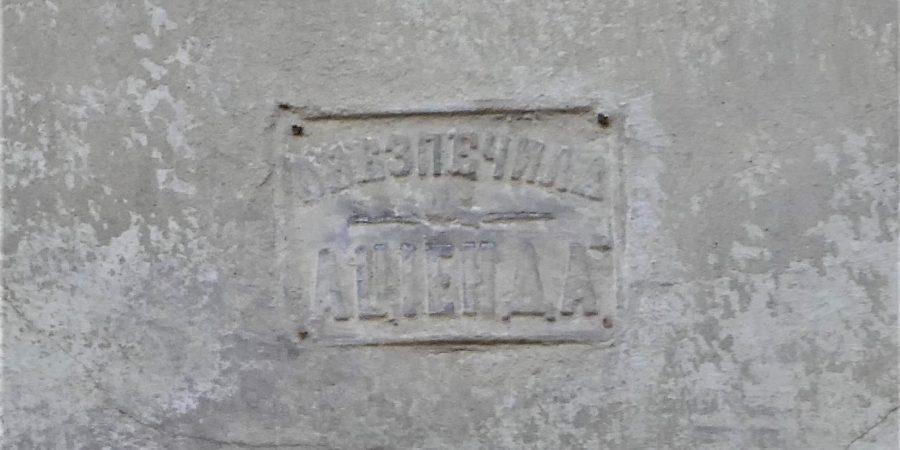I started working on this article in February 2022, shortly before the war started and before I ended up in Kraków for several months.
***
Every day I walk to work across Lviv’s Old Town, passing Rynok Square right in front of the city hall building, down Ruska Street, then up Prosvita to my office building. I’ve walked this way hundreds of times, and yet there are still many things to discover along this route. My latest discovery is an old fire mark: an insurance plaque indicating that a building was insured against fire. Though, I must admit — I didn’t find by myself, but because of an article that was recently shared on social media.
I have written about fire marks before. I first came across them in Annapolis, then in my hometown of Winnetka. In Ukraine, I found one in Mukachevo, which I wrote about in a small article (my article is mentioned in the above piece about Lviv’s fire mark). And as it turns out, there is a fire mark in Lviv, and it is found on Ruska, a block-long street from Rynok Square to the edge of the Old Town. Located high above one of the buildings I pass, blended in with the paint of the façade, I doubt I would have ever discovered it my own. Indeed, even when I knew where it was located, it took a couple of minutes to actually spot it from across the street.
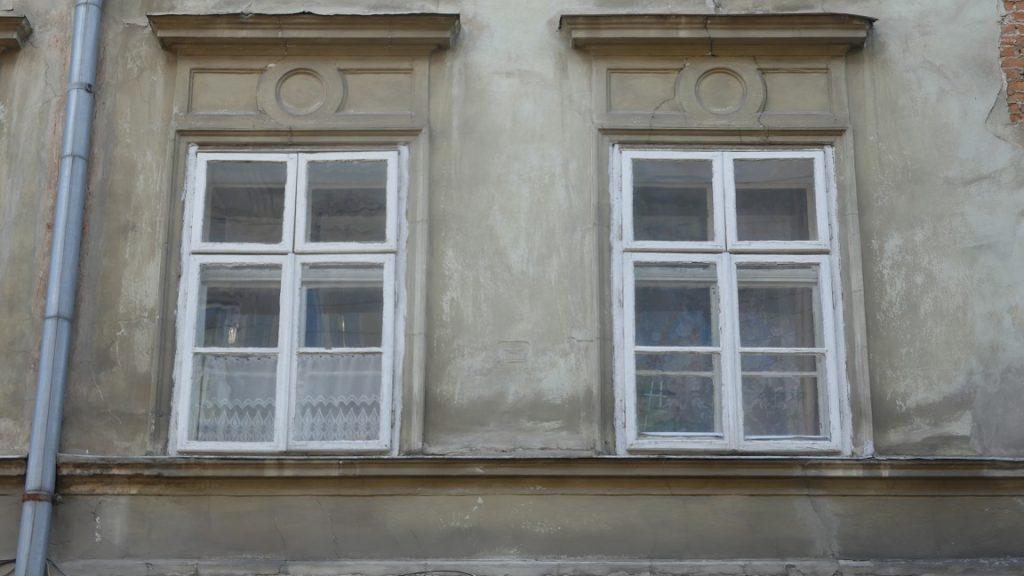
The fire mark has an inscription that reads “Обезпечила Аціенда” (Obezpechyla Azienda), which means “Secured by Azienda.”
It is not the sole surviving fire mark in the city (I’ve found one other), but it is the only one in Ukrainian — one of the very few prewar inscriptions in the Ukrainian language that can be found in the urban landscape. Much more common are ghost signs and inscriptions in Polish, German, and Yiddish.
It’s not strange that this Ukrainian-language remnant is found on Ruska Street, which translates as “Ruthenian” (Ukrainian) — this was the main street going through the Ruthenian section of the Old Town. For many centuries, it remained the center of political, economic, and cultural life of Ukrainians.
Azienda Assicuratrice
So what is “Azienda”? Azienda Assicuratrice was an insurance company based in Trieste (then part of the Austrian Empire), founded in 1822 by Jewish businessman Giuseppe Lazzaro Morpurgo. Morpurgo based his company on the model of Anglo-French fire insurance, encouraged by “the knowledge of the prosperity of English and French fire insurance, which is always linked to public prosperity.”
Soon after its founding, Azienda received imperial approval becoming the K.K. Priv (Imperial-Royal Privileged) Azienda Assicuratrice public limited company. Later the company extended its operations to insure not only against fire but also against risks by maritime and inland navigation, the conveyance of merchandise by land, and in time also offered life insurance. The company quickly spread its activities across the Empire, opening a representative office in Lemberg (Lwów / Lviv) in 1824.
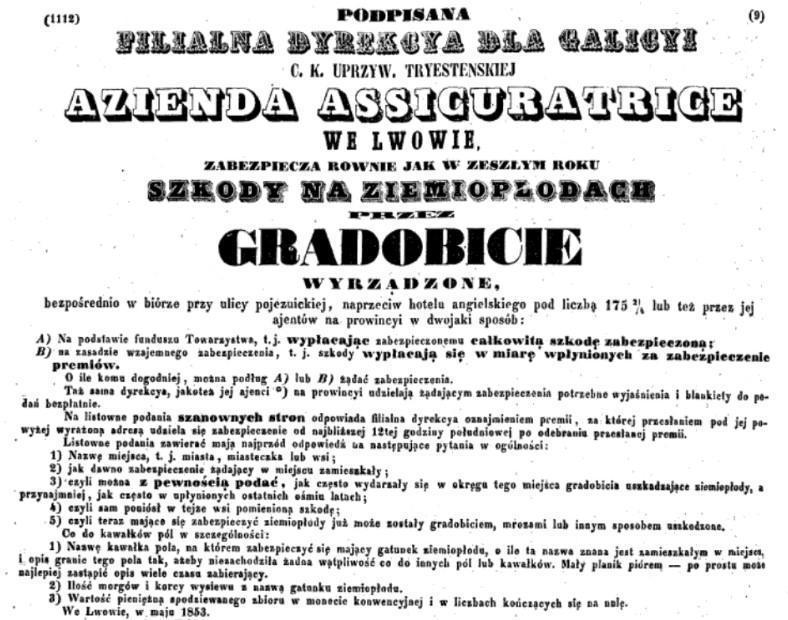
Azienda started using fire marks in 1832. The company’s agents delivered the metal plaques to the policyholders, who attached them to the front of their buildings, making them easily recognizable. The fire marks were made from brass or tin and were of different shapes and colors. Some featured the double-headed eagle or other symbols. The inscriptions were written in the local languages.
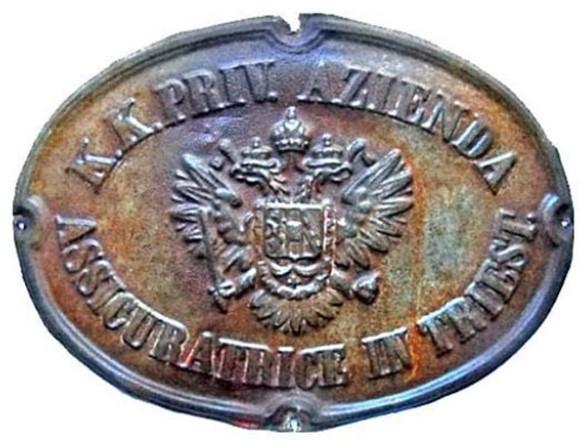

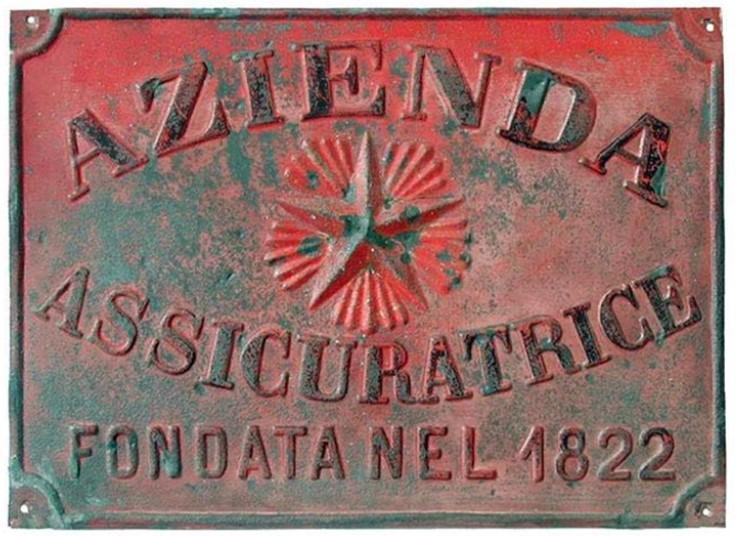
In 1883, while the president of Azienda was Karol Jabłonowski, the local office was located at 5 Akademicka Street (today Prospekt Shevchenka). When the president became Kalikst Poniński, the office moved to 8 Mariacka Square (today Mitskevycha).
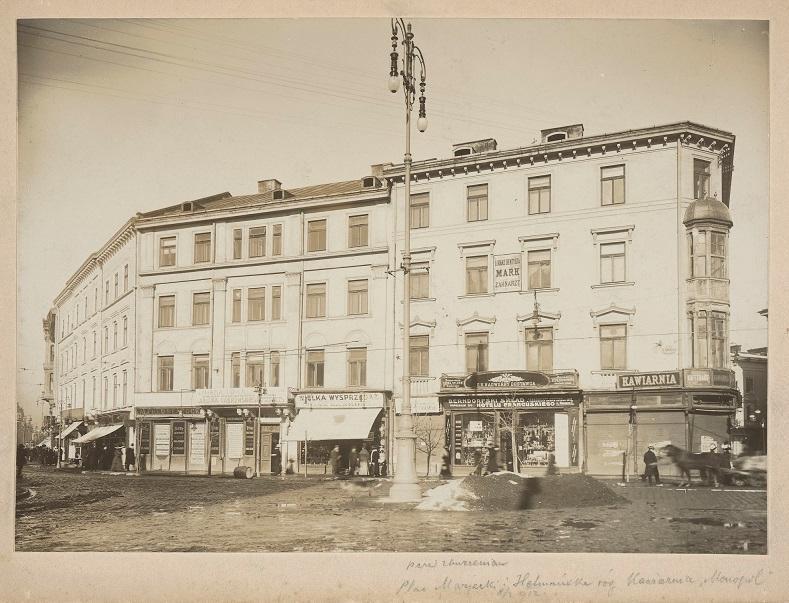
Cooperation with the Stauropegian Printing House
In Lviv, the building on which the Azienda fire mark has survived housed a number of Ukrainian civil organizations, including the bookstore of the Stauropegian Institute. The connection to the institute was likely no accident.

As Zommersteinhof writes in his article: “Given the predominant Greek Catholic population in Eastern Galicia, the company tried to attract Ruthenians and especially priests. As a result, they cooperated with the Stauropegian printing house to promote their company among the clergy and ordinary peasants — Ruthenians and Poles […] One of the advantages of the Stauropegian printing house was that it could print texts in Gothic, Latin, Greek, Church Slavonic, and ordinary Cyrillic fonts. So the connection of Azienda with the printing house was an incredibly successful marketing move.” Due to this, Azienda commissioned the Stauropegian Institute to print various materials for Ruthenians, Poles, and Austrians.
The Ruthenian community appreciated these efforts to publish in different languages. For example, the periodical Pysmo do hromady encouraged Ruthenians to be insured by Azienda, emphasizing that five percent of the proceeds go to the People’s House and the fact that the insurance company not only issues Ruthenian-language policies but fully conducts business correspondence in Ruthenian. As a result of the well-thought-out activities of the insurance company, most of the Ruthenian clergy and Ruthenian peasants secured their lives and property with Azienda.
Azienda vs. a Local Insurance Company
The Poles had a different view on Azienda than the Ruthenians. Poles believed it was more patriotic to be insured by a local Polish company, namely, the Kraków Mutual Insurance Society (Towarzystwo Wzajemnych Ubezpieczeń w Krakowie) so that money would not flow out of Galicia and Bukovina.
A debate ensued. One Ruthenian responded that Ruthenians should choose neither the Kraków society nor Azienda, but that Ruthenians should establish their own people’s society instead. (It would not be until 1892 that the Ruthenians established their own insurance society — the Dnister Insurance Company.)
In 1889 a law came into force that made it compulsory for church buildings (churches and clergy houses) as well as school buildings to be insured. As a result, two proposals were submitted to the Lviv episcopate from insurance companies — the Azienda Vienna Austro-French Joint Stock Company and the Kraków Mutual Insurance Society. In the end, the Metropolitan Consistory chose to support the local economy and signed a contract with the Kraków Mutual Insurance Society. As a result, Ukrainian Catholic Metropolitan Sylvester Sembratovych ordered all Ruthenian parishes and parish committees to be insured by the Kraków society. As a result, the Stauropegian printing house also severed ties with Azienda.
The Kraków Mutual Insurance Society
The Kraków Mutual Insurance Society (Towarzystwo Wzajemnych Ubezpieczeń w Krakowie – TWU) was established in 1860 on the initiative and as a result of many years of efforts by landowner Franciszek Trzecieski. Its main seat after 1885 was at 6 Basztowa Street in Kraków, in a structure built specially for the society. The neo-Renaissance building, today home to a music academy, is topped with an openwork attic and a statue of St. Florian, the patron of the society.
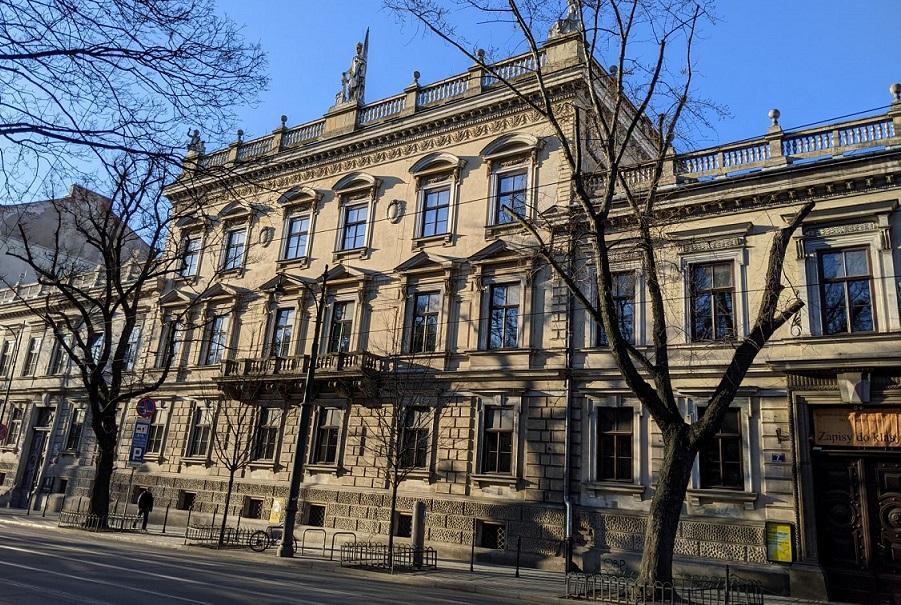
St. Florian was depicted on the company’s documents as well as on the company’s fire marks (some have survived until today on Krakow’s old buildings).
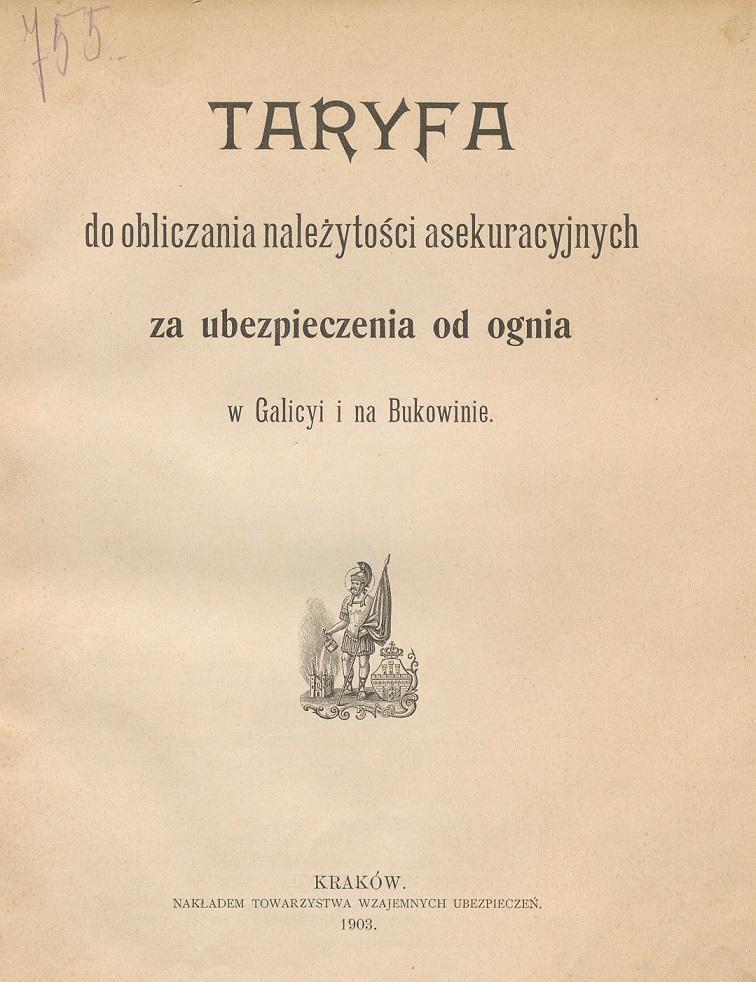
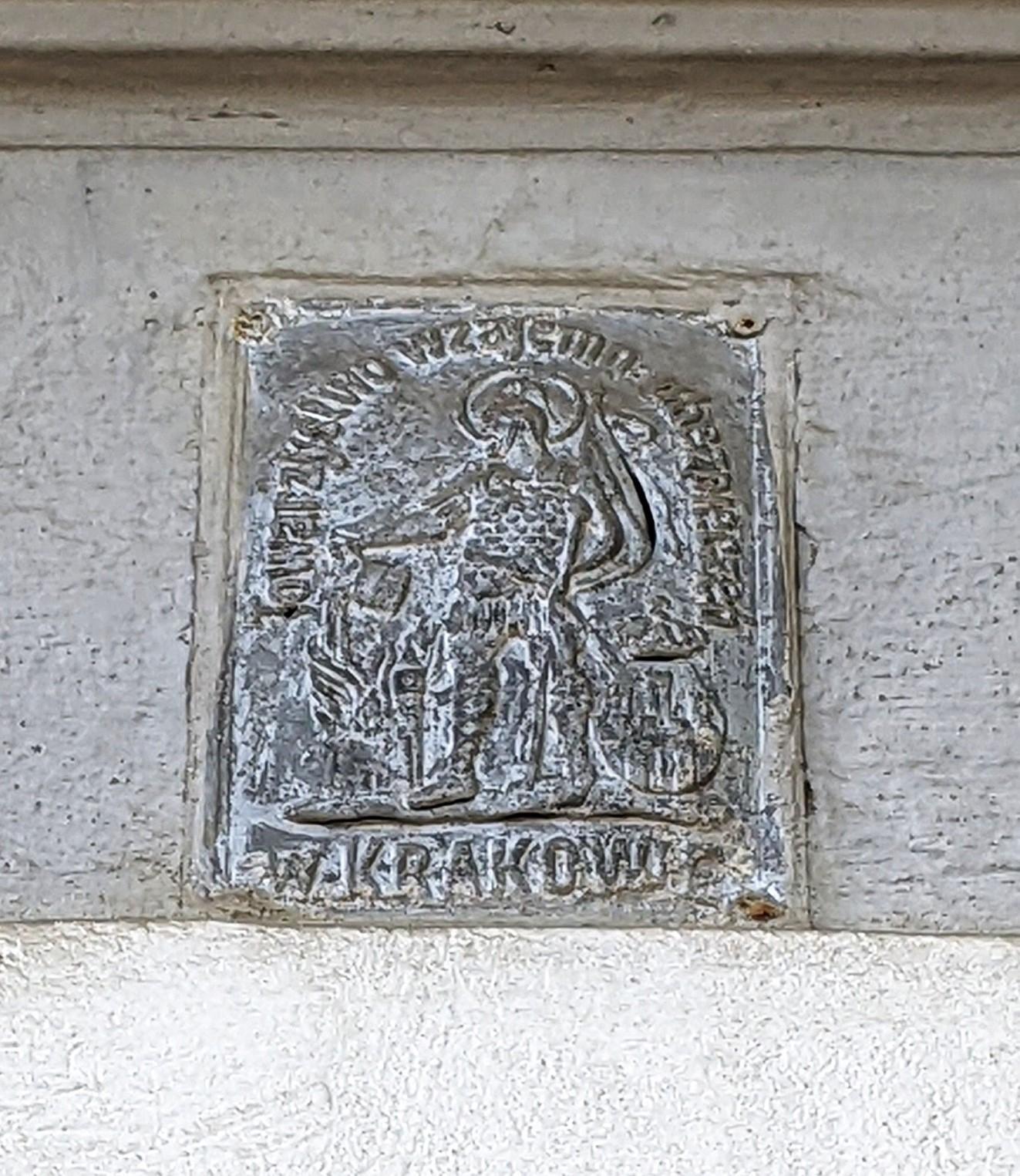
During its activity, the society opened a branch in Lviv, covering the area of Eastern Galicia and Bukovina.
Other than the above-mentioned Ukrainian language fire mark, I have found one other fire mark in Lviv. As it depicts St. Florian, I am quite certain it was from the Kraków insurance company. Furthermore, it looks like the Kraków coat of arms is depicted in the lower-right corner. The letters are indecipherable, but their placement is similar to the lettering on their other fire marks.
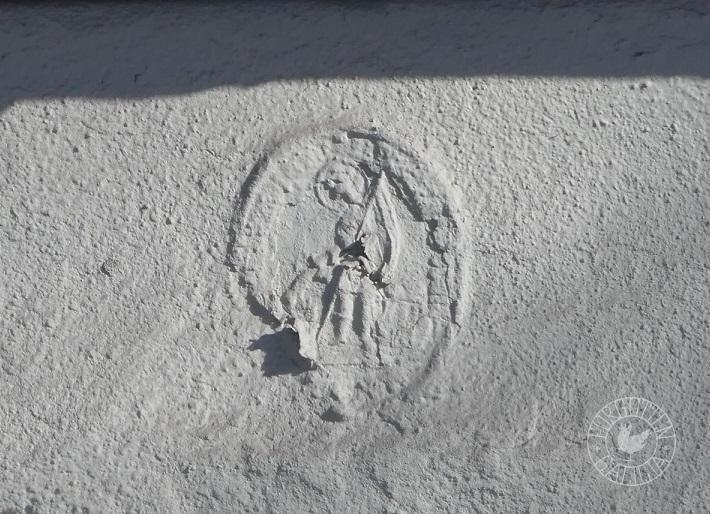
Assicurazioni Generali
After the Kraków Mutual Insurance Society was chosen, Azienda did not leave Lviv. In 1885 the company was officially absorbed by the powerful Assicurazioni Generali — an insurance company founded in 1831, also in Trieste. One of the founding fathers was Giuseppe Lazzaro Morpurgo — the same Morpurgo who founded Azienda.
Assicurazioni Generali appeared in Galicia as early as 1837. For almost half a century, Generali and Azienda worked separately in Lviv.
In 1909, Generali built a late Secession-style building at 3 Kopernyka Street and continued to insure Galicians until WWII. At the entrance, one can still see faint traces of the inscription: “C.K. UPRZYW ASSICURAZIONI GENERALI.”
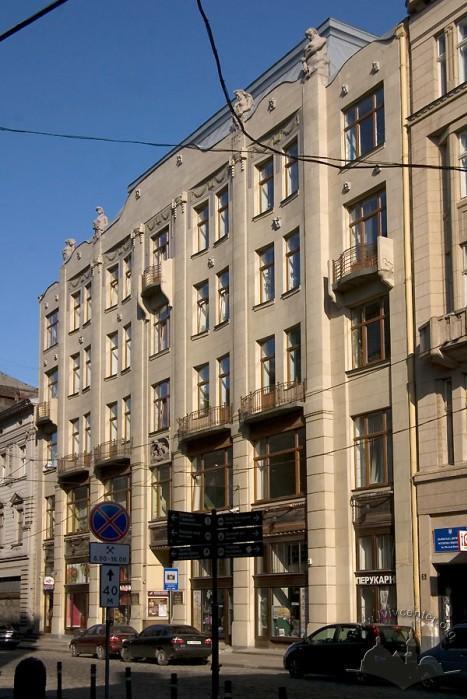
Photo credit: Ihor Zhuk. lia.lvivcenter.org
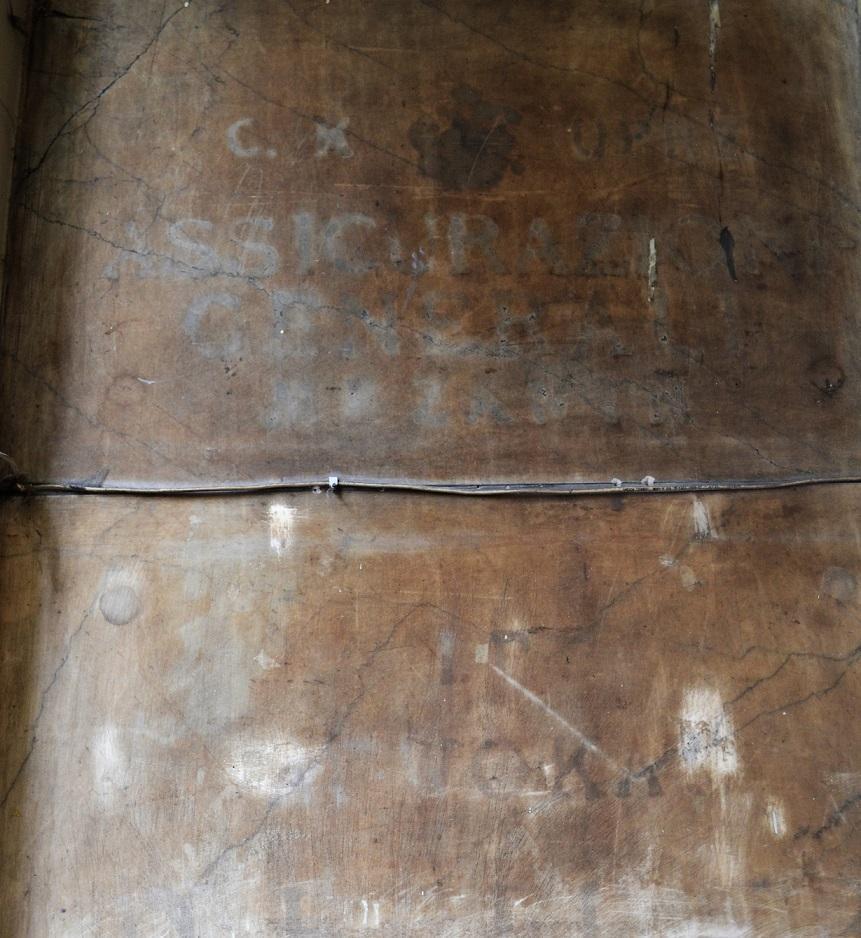
C.K. UPRZYW ASSICURAZIONI GENERALI
Today, Assicurazioni Generali is the largest insurance company in Italy and one of the most successful in Europe. Still headquartered in Trieste, the company’s activities are concentrated in Western Europe, Asia, and Latin America.
By Areta Kovalska
Sources:
A widespread heritage: the Generali fire marks
The Assurance Magazine and Journal of the Institute of Actuaries, Volume 3
«Обезпечила Аціенда» або від маленької таблички до великої історії

